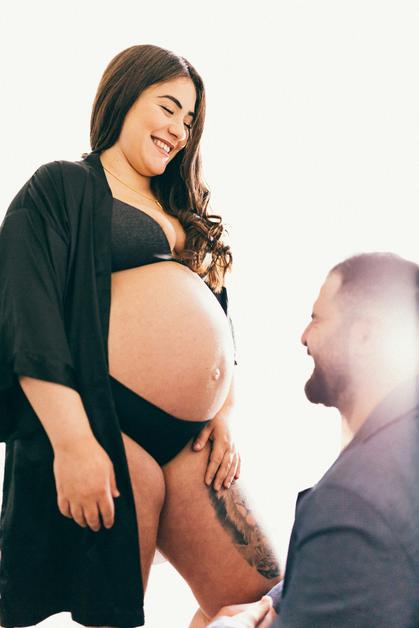You are weighing a tender decision that mixes science, privacy, work, and heart. You wonder when the moment will feel both joyful and steady. You want reassurance, yet you might need support now. If you are searching when to announce pregnancy (12 weeks vs 12 gestational weeks), you are really asking two things at once, what do clinicians mean by 12 weeks and when will it feel medically and emotionally safer to share. The answer blends timing of key scans, evolving risk over the first trimester, your day to day reality at work, and your own pace. By the end, you will have a simple framework, scripts you can adapt, and a plan you can revise if life asks you to pivot.
Quick orientation for parents
- You might choose a staged rollout, inner circle, family and close friends, work, broader social network.
- There is no medical rule that forces a wait. If you need help or safety adjustments, tell a trusted person earlier.
- Many parents aim for the first trimester scan around 11 to 13 weeks, then decide when to announce pregnancy (12 weeks vs 12 gestational weeks) with more confidence.
What 12 weeks means, the language clinicians use
You might see two clocks and feel lost. Here is the tidy version that clinicians actually use.
- Gestational age starts on the first day of your last menstrual period. When a midwife or doctor says 12 weeks, they mean 12 weeks by this clock.
- Conception or fetal age starts about two weeks later, near ovulation. That number is smaller, it is not the standard for scheduling care.
Put simply, 12 weeks and 12 gestational weeks describe the same clinical count from the last period. If a sonographer writes gestational age 12 weeks, that is the standard. Many departments also write weeks of amenorrhea, it is the same thing.
You might ask, so when to announce pregnancy (12 weeks vs 12 gestational weeks). If you are using the clinical clock, the two phrases are interchangeable in practice, which is why most resources and appointment schedules align to the 12 week mark by gestational age.
Medical checkpoints around week 12 that change how this feels
Think of week 12 as a cluster of touchpoints that shift uncertainty.
- Ultrasound for dating and viability. A dating ultrasound often measures crown-rump length to confirm how far along you are. Hearing or seeing a heartbeat offers a powerful signal that the pregnancy is progressing.
- Screening window. Many centers offer nuchal translucency screening and the combined first trimester screening between 11 and 13 weeks. Others offer cell-free DNA screening or NIPT starting at about 10 weeks.
- Symptom trajectory. Nausea and fatigue can start to loosen their grip as the placenta matures, which can make conversations at work and with loved ones feel easier to manage.
These checkpoints are why many families settle on their answer to when to announce pregnancy (12 weeks vs 12 gestational weeks) after the first trimester ultrasound, not because there is a rule, but because a scan gives context.
How screening works in plain language
Screening assigns probability, not diagnosis. The combined screening pairs an ultrasound measurement at the back of the baby’s neck, the nuchal translucency, with maternal serum markers like PAPP A and free beta hCG, then folds in maternal age to refine risk estimates for chromosomal conditions. NIPT analyzes fragments of placental DNA in your blood. Both tests report a risk category. Terms like sensitivity, specificity, and positive predictive value describe how often a screen catches a true case and how often it raises a false alarm. Your clinician will translate your numbers into clear next steps.
If a screen returns high probability, diagnostic options exist, for example CVS in the late first trimester or amniocentesis in the second trimester. Diagnostic tests provide yes or no answers, not probabilities.
Miscarriage risk, the weekly trajectory, and why reassurance grows
You want numbers. You also want honesty. Most natural losses occur early, commonly related to chromosomal differences that no parent causes. After a heartbeat is confirmed, the probability of loss decreases with each passing week, and by about 12 weeks it is much lower than at six or seven weeks. Age, prior history, bleeding, and scan findings all shape individual estimates, which is why your team personalizes the conversation.
When parents decide when to announce pregnancy (12 weeks vs 12 gestational weeks), many anchor the choice to this falling curve of miscarriage risk. Some share earlier with a small circle and wait on wider news until a reassuring scan. Others prefer to broaden their support network immediately. Both are reasonable.
Practical decision paths you can use today
Consider three rapid questions.
- Do you need support now. If yes, confide in one or two people you trust.
- Does work pose exposures, solvents, radiation, cytotoxic drugs, heavy lifting, long standing. If yes, notify your manager or HR to request workplace accommodations.
- Would a scan help you breathe easier. If yes, plan to revisit after the first trimester ultrasound.
This tiny flowchart often settles the timing without pressure.
Work, safety, and privacy, how to choose the right moment for you
Workplaces vary widely, from desk roles to lab benches to operating rooms to classrooms. Your safety matters more than secrecy. If your role involves exposures or physical demands, early pregnancy disclosure to a supervisor or occupational health can allow duty modification, protective equipment, schedule changes, or remote work options. In many regions there is no legal obligation to announce before 14 weeks, and confidentiality can be requested while adjustments are made.
Sample language you can copy.
- To a manager, I want to let you know I am pregnant. I am about X weeks by gestational age. I would like to discuss any temporary adjustments and confirm process with HR.
- To HR, I am notifying you that I am pregnant with an estimated due date of X. Please share our leave policy and any documentation you need.
If your workplace is calm and low risk, you might prefer to decide when to announce pregnancy (12 weeks vs 12 gestational weeks) after your scan. That is common and acceptable.
Social sharing and boundary setting in the digital age
Friends cheer, phones light up, posts travel. You get to decide the tempo. A soft launch to a small circle first, then a social media announcement later, is a popular sequence. If privacy matters, ask people not to share without your OK and consider private groups or message threads. You can also pre write a caption for later and save it until your chosen milestone.
Who to tell and when, simple roadmaps plus scripts
Start with the person who supports you daily, then widen the circle as you feel ready. Keep medical details minimal unless you want to share.
- Partner, I have news, my test and early appointment look good. I am about X weeks pregnant. I would love your support and to plan how we tell family.
- Parent or sibling, I am sharing a little early because your support would help. I am X weeks pregnant and I have a scan soon.
- Close friend after 12 weeks, We are excited to share, we are expecting in month. We will wait to post publicly, but wanted you to know first.
- Team announcement, I am happy to share that I am expecting a baby. I will coordinate with my manager on coverage and will share timelines as they firm up.
You can calibrate each step to your own answer for when to announce pregnancy (12 weeks vs 12 gestational weeks).
Special scenarios that shift the timeline
- Fertility treatment or donor conception. Early monitoring and frequent scans may give reassurance sooner. Many tell a small inner circle early, then pause wider news until after the first trimester checks.
- Pregnancy after loss or prolonged infertility. Layer your announcements. Keep a support group close early, then wait for a reassuring scan before going wider.
- Multiples or higher risk care. More visits and earlier conversations are common. Align your timing with your comfort and the plan you build with your clinician.
These scenarios often change the emotional calculus of when to announce pregnancy (12 weeks vs 12 gestational weeks), which is normal.
Avoiding date confusion when you share
Use clear wording. For example, I am 12 weeks pregnant by gestational age, which is counted from my last period. If your due date shifts after a scan, use the updated date consistently with family and work. If someone asks about the two week difference, you can say, medical teams count from the last period to simplify scheduling. Conception usually happens about two weeks later.
Announcement ideas, simple to memorable
- Slip a printed ultrasound image into an envelope during a family meal.
- A photo of tiny booties on a bookshelf with a short caption.
- A calm caption for a private message, Sharing with our nearest, we are expecting, please keep this private while we complete early checks.
- Later, Baby arriving month year, grateful and excited.
You might tie the reveal to your own milestone, for instance the day you answer when to announce pregnancy (12 weeks vs 12 gestational weeks) after a reassuring scan.
Coping plans if the path changes
No one likes to plan for hard turns, yet the plan itself can be comforting. Decide now who you would want informed and how public you would want that to be. You can delegate updates to a trusted person if needed. Gentle wording can help, We experienced a loss and are taking time to process. We appreciate privacy and will share updates when we can. Your clinician can guide next steps, including follow up appointments and support services.
Evidence snapshot, why week 12 is such a common anchor
- Early heartbeat detection typically occurs in the first trimester.
- The combined screening, that is NT plus serum markers, is performed between 11 and 13 weeks.
- Many parents choose to wait for the first trimester ultrasound, then decide when to announce pregnancy (12 weeks vs 12 gestational weeks) with a calmer mind.
- The detailed anatomy ultrasound is usually scheduled at 18 to 22 weeks, some parents prefer to wait for that before a public post.
Key takeaways
- Choose your timing based on health needs, personal comfort, and work context, not a single rule.
- The phrase when to announce pregnancy (12 weeks vs 12 gestational weeks) rests on one clinical clock, weeks counted from the last menstrual period, and many families wait for the first trimester ultrasound around this time.
- Miscarriage risk decreases after early milestones and continues to fall through the end of the first trimester, which explains why reassurance rises near week 12.
- Early safety or support needs justify earlier pregnancy disclosure at work, and you can seek workplace accommodations while keeping broader privacy.
- Screening options include nuchal translucency screening, first trimester screening, and cell-free DNA screening, and diagnostic choices like CVS or amniocentesis are available when indicated.
- Share in stages if that feels right, partner and inner circle, then family and close friends, then team and public. Your answer for when to announce pregnancy (12 weeks vs 12 gestational weeks) can change as new information arrives.
- Clinicians can help you interpret scans, tests, and probability, and support the plan that gives you peace. For personalized guidance and free child health questionnaires, you can download the Heloa app here, https://app.adjust.com/1g586ft8.
Questions Parents Ask
Do I need to update legal documents (wills, guardianship, healthcare proxies) when I announce a pregnancy?
It’s not urgent for everyone, but it can bring peace of mind to check a few things early. Review or consider:
- Guardianship: name a guardian in your will or estate plan so your wishes are clear.
- Beneficiaries and life insurance: make sure policies and accounts list the people you want to benefit.
- Healthcare proxy and advance directives: confirm who can make medical decisions for you if needed.
- Emergency contacts and pediatric care preferences: write down practical details to share with a trusted person.
If you already have a lawyer or financial advisor, a short update takes little time and can prevent stress later. If not, many families use a brief consultation to set the essentials and then refine details after the baby arrives.
If I told people early and later have a miscarriage, how do I manage reactions and possible regret?
First, be gentle with yourself — any feelings of regret, sadness, or relief are normal. Practical steps that can help:
- Decide who you want to inform and how. You can tell the same people you confided in, or limit the circle now if that feels safer.
- Use a short, honest script if you need one: “We had a loss and are taking time to process. We appreciate your understanding and privacy.” Simple wording protects your energy and sets a boundary.
- If social posts were already public, you can remove or archive them; you might also post a brief request for privacy if you’re prepared to share more widely.
- Delegate updates if that eases the burden: a close friend or family member can let others know on your behalf.
- Seek support: many parents find comfort in a trusted clinician, bereavement counsellor, or peer groups. Loss is painful, and reaching out is okay.
Telling early doesn’t mean you made the wrong choice — people share for many good reasons (support, safety, practical needs). Whatever you feel afterwards is valid, and you can adjust how you communicate going forward.
How should I announce on social media — any platform-specific tips or privacy settings to consider?
Think audience first: different platforms reach different people. Small practical ideas:
- Facebook: use the Friends list feature or a private post to limit visibility. Consider posting in a private group or sending messages to close contacts.
- Instagram: Stories with the “Close Friends” list work well for a soft launch; for a permanent post, check comments and tag controls.
- WhatsApp/Signal: a family or close-friends broadcast can feel intimate and controlled.
- LinkedIn: keep it brief and professional (e.g., mention upcoming parental leave plans) and avoid oversharing medical details.
- General tips: draft your caption in advance, decide whether to allow comments, and ask friends not to repost if privacy matters. You can also wait until a milestone (12 weeks, anatomy scan) for a wider public post while sharing earlier with a small circle.
Choose the pace and tools that protect your comfort — social media can celebrate the news or simply inform the people who matter most.

Further reading :









